Our discovery that rice crops support the largest known breeding population of one of the world’s rarest, most threatened waterbirds is raising a few eyebrows. The value of agricultural habitats like these is not widely recognised in Australia. Intriguingly, it’s also becoming clear that winter cereals play a role in supporting bitterns between rice seasons.
Just a couple of weeks ago, Ian Payne, a Coleambally rice farmer, flushed a bittern using a young wheat crop. It had been planted on rice stubble. This rotation is common practice, capitalising on the soil moisture. There was some old Barnyard Grass next to a supply channel, and Ian suspected it might be providing the necessary cover for this sneak. Bitterns use it a lot in the rice fields.
During winter and spring last year, we had four similar records. In the Murrumbidgee Irrigation Area, bitterns were sighted in wheat near Wilbriggie and in oats near Koonadan, both recently watered crops. And back in the Coleambally region, there were two separate records of bitterns in wheat crops last year. This begs the question, without the usual abundance of frogs and fish in the rice, what is the attraction?
Mice may be important prey for bitterns in wheat and rice crops. Photos by Peter O’Connell.
Mice seem a good candidate. The photos above, although taken outside of the Riverina rice-growing region, do not capture a one-off event, with several observers seeing bitterns eat mice at Werribee’s Western Treatment Plant. And back in the rice, a few years ago, Peter Merritt watched four bitterns near Jerilderie devouring mice. Just a couple of months back when we were busy trying to catch bitterns to attach transmitters, the only apparent, potential prey at some sites was mice. The crops were dry, ready for harvest, and no puddles remained in the channels. If mice are important prey for bitterns in wheat and rice crops, then they’re not alone. For example, Black-shouldered Kites appear to thrive on the mice in rice fields, and they probably helped attract the Eastern Grass Owls we’ve seen.
This bittern, hunting on the edge of a rice crop, was one of four seen preying on mice at this site in 2011. Photo by Peter Merritt (www.merrittimages.com).
Robbie has now been at Long Swamp for eight weeks. It’s clear, he loves it there and as you can see below, he’s had a good look around, carving it up. But what will Robbie do next? Much to our surprise, Debbie Sullivan from Birdlife Australia has recently heard booming males over in south-western Western Australia. It seems conditions are right and the males at least are raring to get the breeding season underway. It makes us think about young Robbie and his future breeding prospects. He’ll perhaps be a little too young, but it’s not out of question that he’ll attempt to breed in his first year. If he is an early starter, the key question remains: will he return to the rice to breed or try and woo a local female down on the coast with his deep booms? Time will tell.
Some of Robbie’s movements in one part of Long Swamp, 550 kilometres from his Coleambally rice crop.
Black-shouldered Kites playing pass the mouse above a rice crop earlier this year.
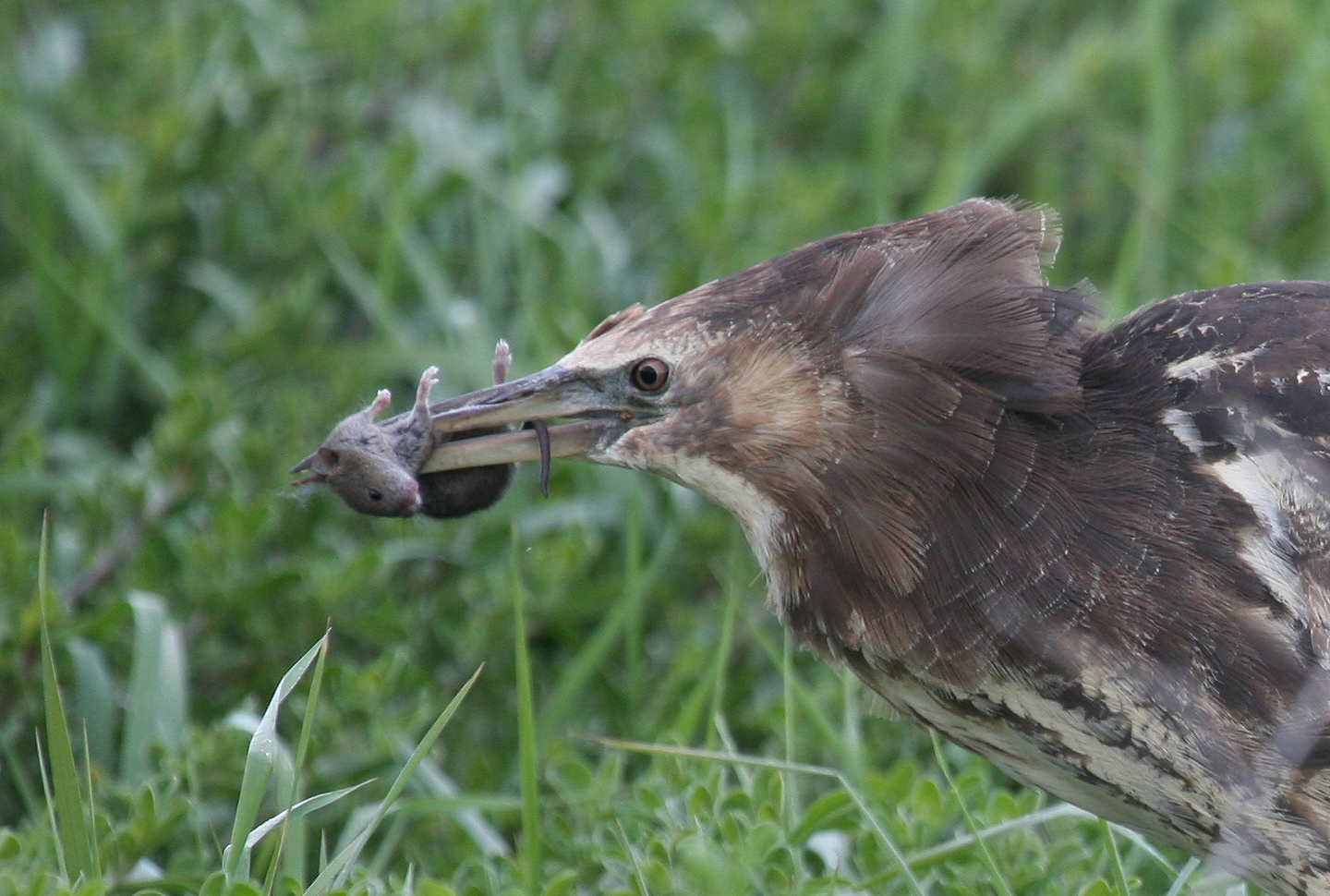
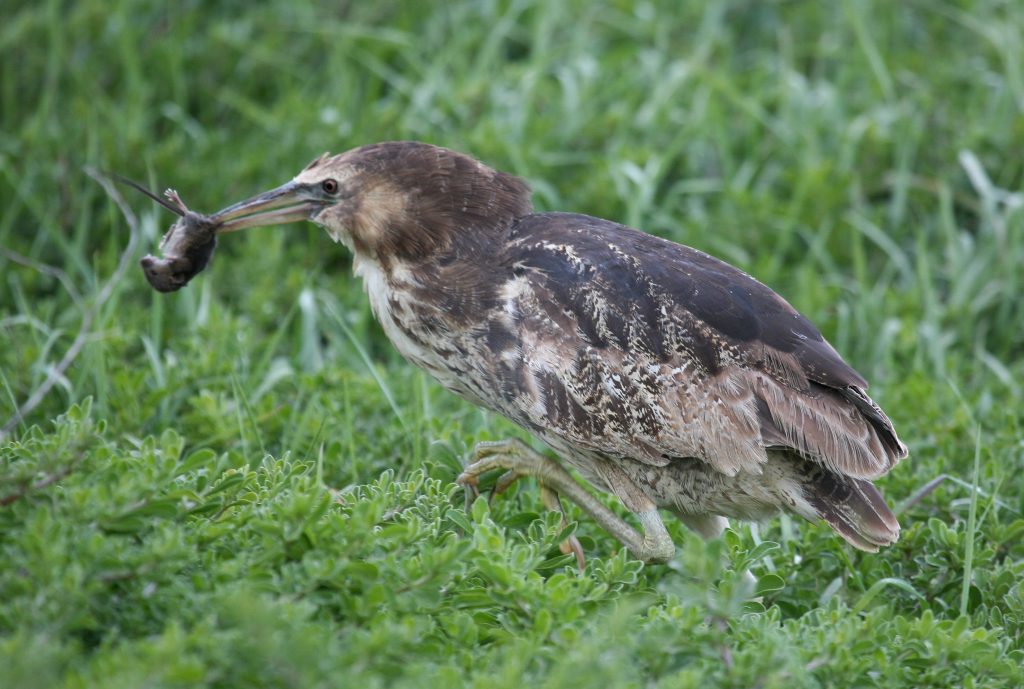
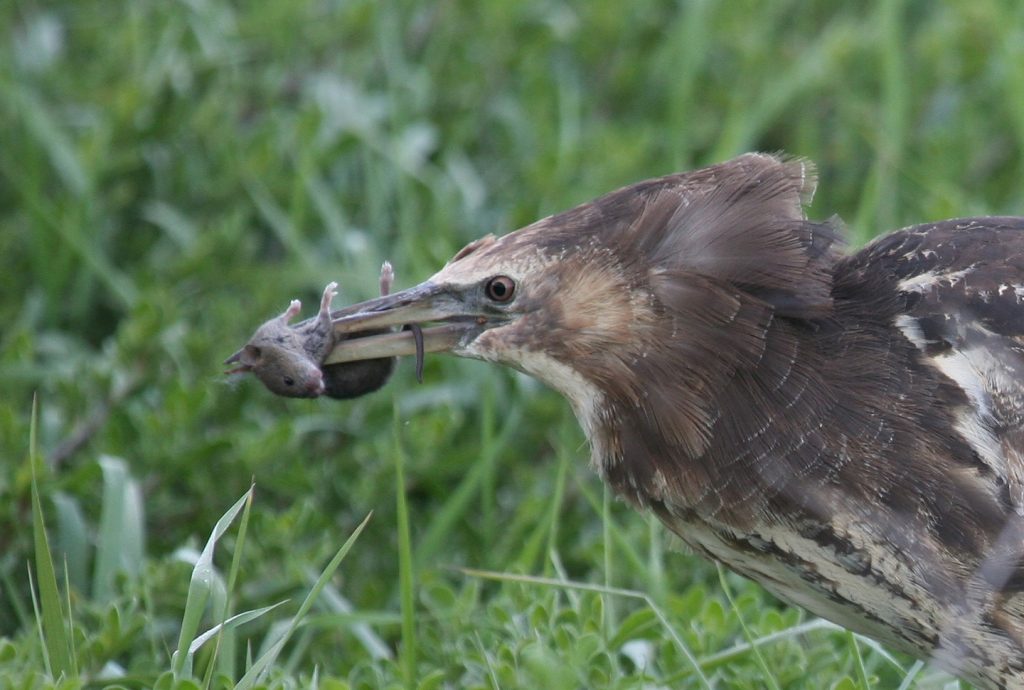
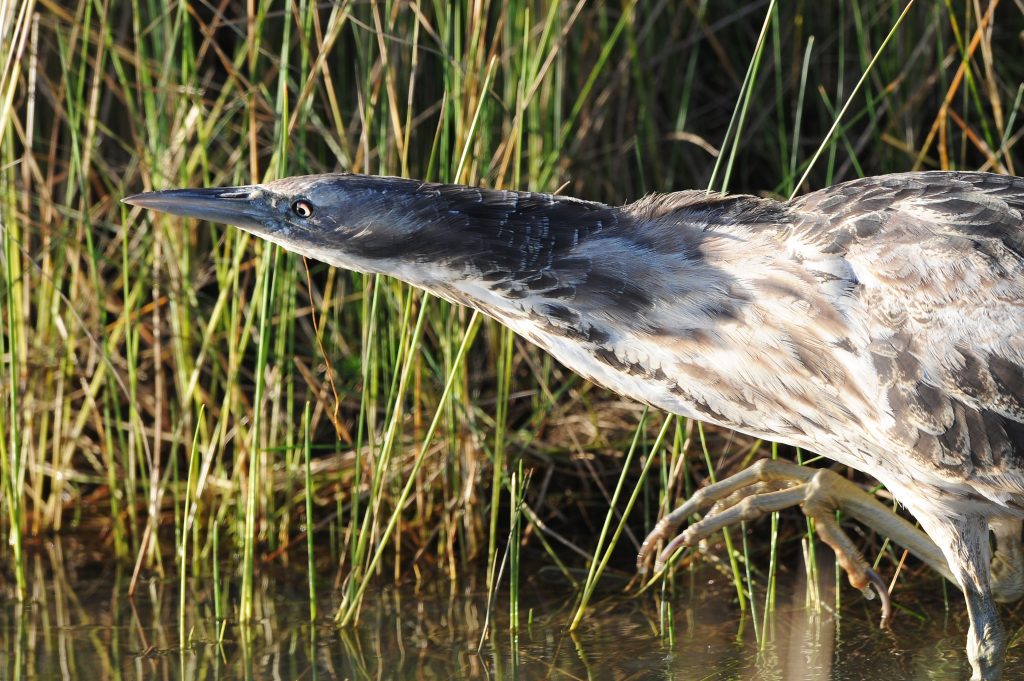
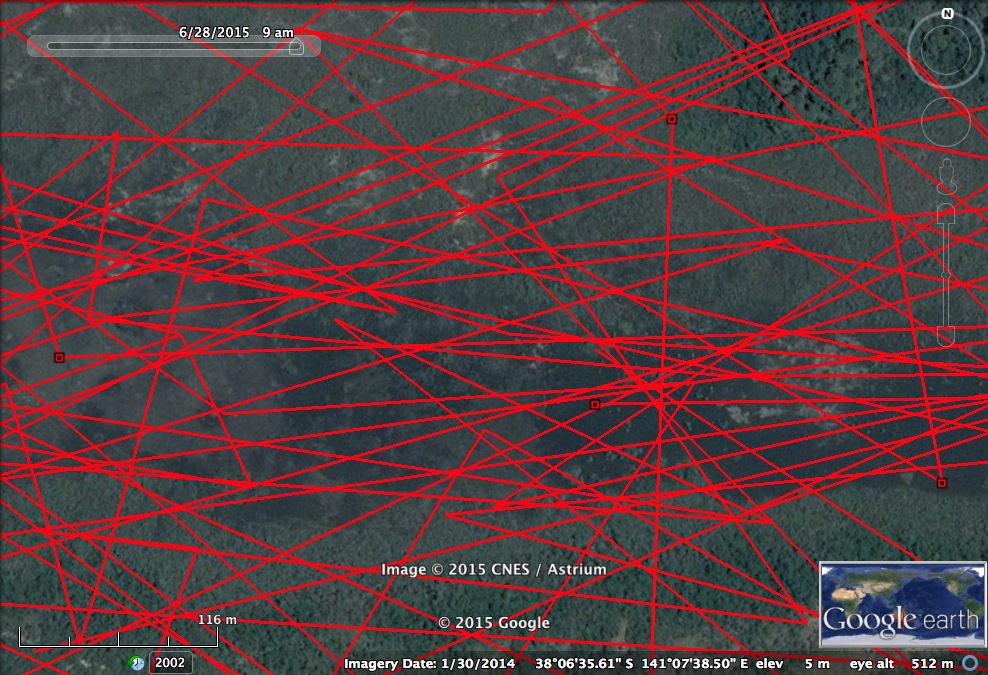
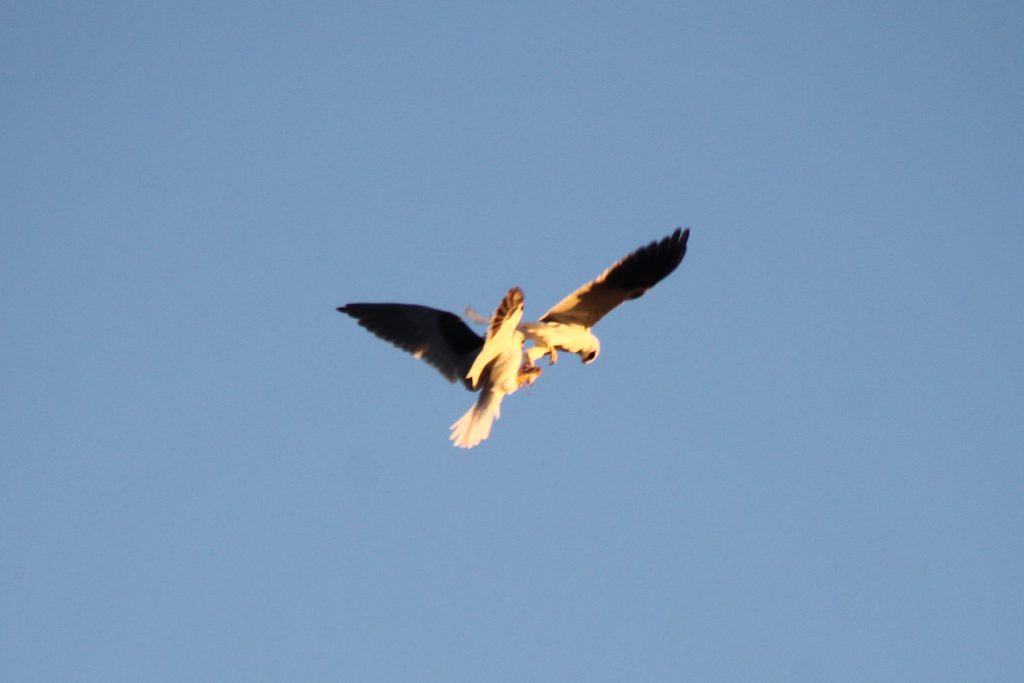
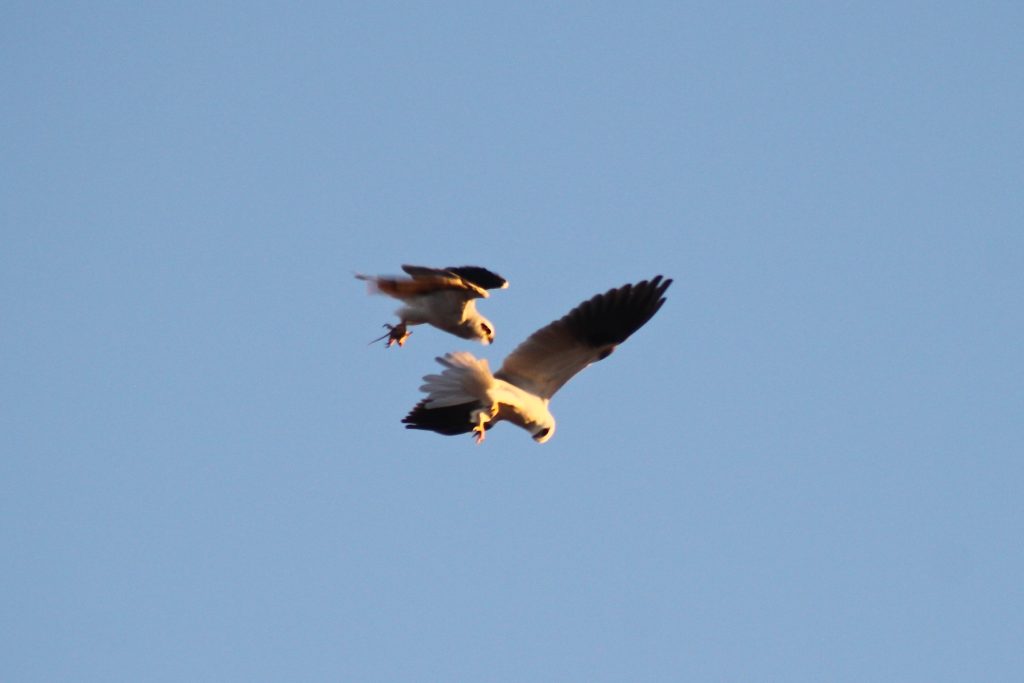
nice story matt, loved the update on Robbie and quest to better understand the Bitterns…
Thanks Mark. They’re slow in revealing their secrets but the satellite transmitters certainly help.
Thanks for another well written and informative update Matthew. I always look forward to these. I feel fortunate that I ‘accidentally’ came across the Bittern Project.
The photo’s which you’ve included are wonderful. Full credit also goes to those wildlife photographers who have a similar interest in the Bittern Project and who wait for many hours to capture the right moment for all of us to enjoy.
It’s wonderful that so many people are passionate about connecting the travels of these Bitterns…. Particularly our star, Robbie!
Regards, Lynette
Thank you so much Lynette, that’s very encouraging.
Hi Matt,
Not sure if you’ve seen this article from 1891. It talks about the Bittern feeding in dry pasture.
http://trove.nla.gov.au/ndp/del/article/140705788?
Extract:
In the autumn months the Tarwin Plate, rich dry pasture lands, become infested with myriads of black crickets, with a fair sprinkling of lizards and snakes. These lands are the feeding-ground of the bittern. Just before sunrise in the early morning they leave the seclusion of the reedy wet marshes for the pasture fields, where there is fair cover, in what would be called good quail country. They feed all day, and during this time the actions of the bird are grotesquely graceful. Stalking with solemn, sedate, yet cautious step through the long tussock grass, it suddenly pauses, the head is thrown right back * till it rests between the shoulders, the underside of the neck is turned upwards, the peak pointed up-wards and bask, the feathers on the neck quiver, and the bird emits a strange sound between a feint hiss and throbbing hum. Suddenly the neck is straightened and the head projected forward, driving the beak into tue earth, exactly like a navvy using a pick. Again the head is raised and thrown back, probably with either a cricket or lizard, which the bird holds aloft, whilst it appears to fairly shake with suppressed *satisfaction. Presently, with a sudden jerk, the mouthful is swallowed, and the bird erects the feathers on its neck and back of the head. At this time it looks a strange object, and twice its natural size. with a sudden shake the plumage subsides, and the bird stalks off to look for more. Should a hawk swoop over the meadow, the bittern instantly crouches, and the bayonet-like beak is brought into position to receive cavalry. I pity the hawk which should become impaled on that formidable spike.
Many thanks Cam, that’s fascinating and quite poetic.
[…] The latest update from the Bitterns in Rice project has come through, and can be seen here. […]
[…] onset of summer and the availability of rice crops with sufficient cover. We still get records of bitterns in wheat crops too. The key point is that despite the clear value of coastal wetlands, some bitterns stay. […]
[…] recall that we’ve previously had bitterns moving about in the Riverina between rice seasons, recorded using irrigated wheat crops, channels, Cumbungi-filled creek lines and large remnant swamps. They all form part of the […]